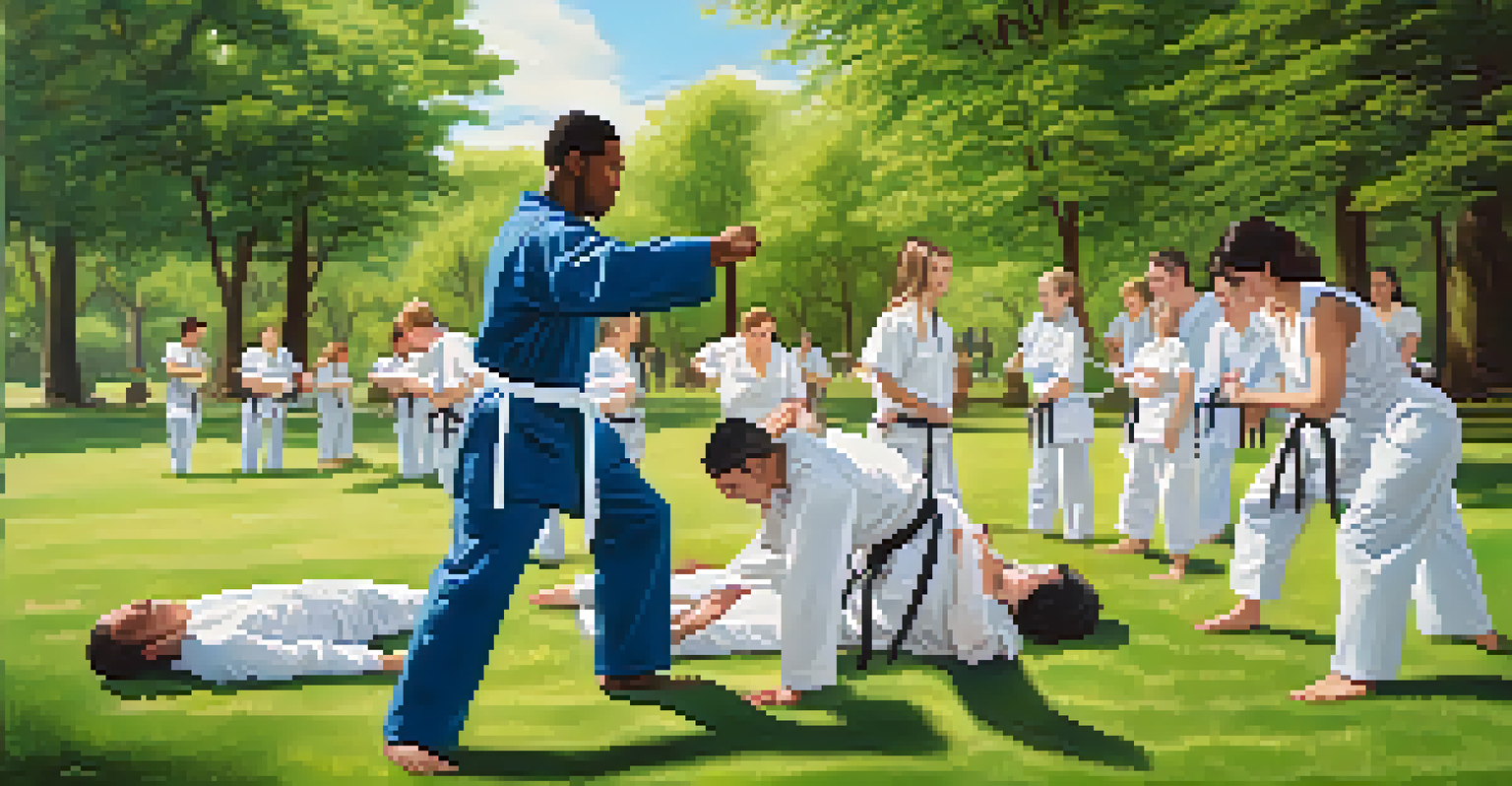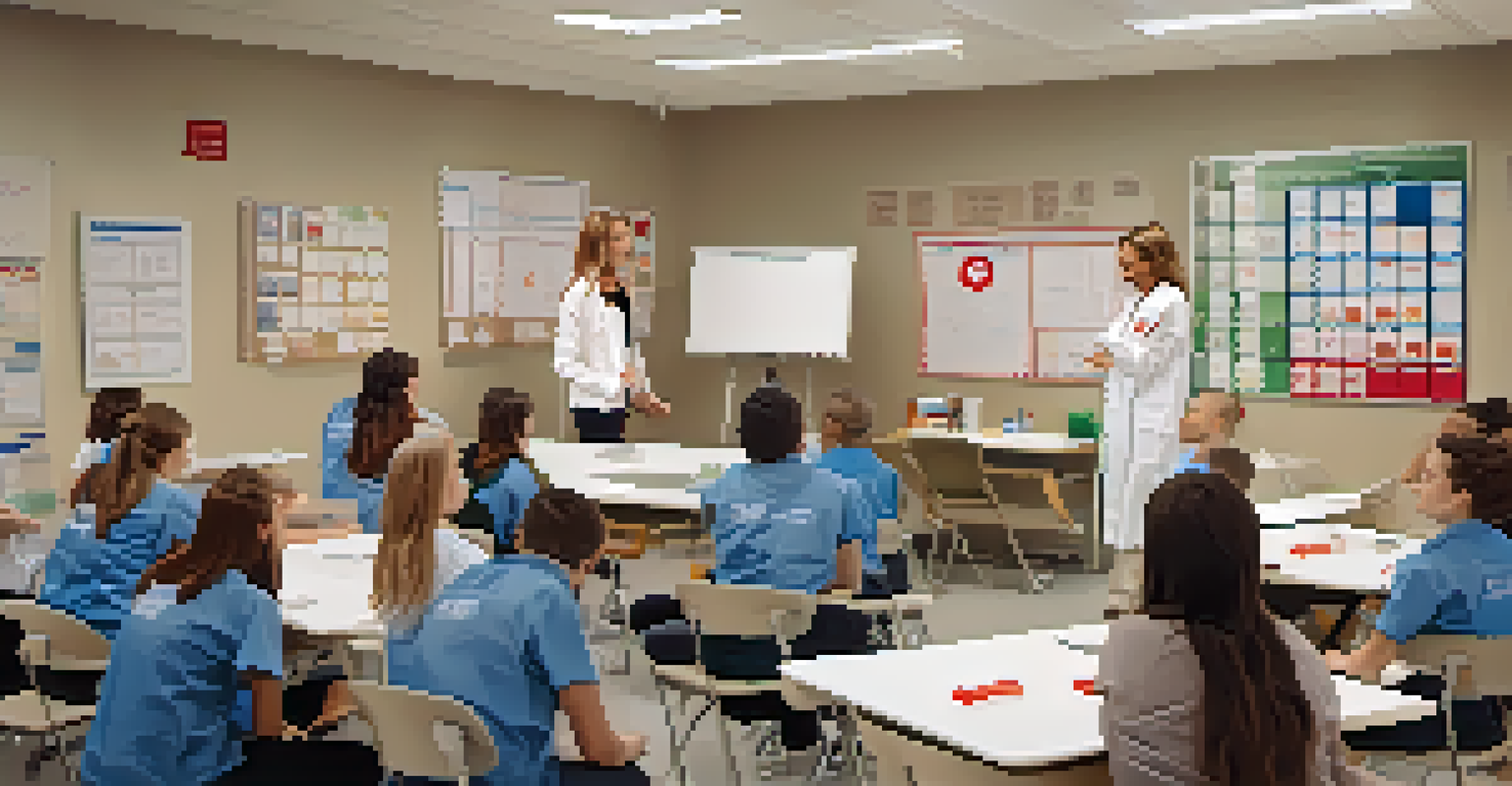Integrating First Aid Skills into Your Self Defense Routine

The Importance of First Aid in Self Defense Training
When we think about self defense, we often focus on physical techniques and strategies to fend off an attacker. However, integrating first aid skills into your self defense routine is crucial. Accidents can happen during training or real-life situations, making it vital to know how to respond effectively.
In any emergency, the first step is to remain calm and take control of your emotions to be able to take effective action.
Imagine a scenario where you or someone else is injured during a self defense situation. Without first aid knowledge, you might panic or hesitate, which can worsen the situation. Learning basic first aid can build your confidence and ensure that you’re prepared for any eventuality, whether it’s a minor scrape or a more serious injury.
Moreover, understanding first aid complements the mindset of self defense; it’s about protecting yourself and those around you. By equipping yourself with both self defense tactics and first aid skills, you're not only safeguarding your physical wellbeing but also enhancing your overall preparedness.
Essential First Aid Skills for Self Defense Practitioners
So, what first aid skills should you focus on? Start with the basics: knowing how to treat cuts, scrapes, and bruises is essential. For instance, learning how to properly clean a wound and apply a bandage can prevent infections and promote healing, keeping you ready for your next training session.

Next, familiarize yourself with CPR and the Heimlich maneuver. These life-saving techniques can be crucial in emergencies, especially if you're training with partners. Knowing that you can act swiftly in case someone experiences a breathing issue can give you peace of mind and allow you to focus on your self defense training.
First Aid Complements Self Defense
Integrating first aid skills enhances your preparedness, allowing you to respond effectively to injuries during self defense training or real-life situations.
Lastly, understanding how to recognize and manage shock is invaluable. In stressful situations, your body may react in unexpected ways. By learning to identify the signs of shock and knowing how to care for someone experiencing it, you can provide essential support and potentially save a life.
How to Incorporate First Aid into Your Training Routine
Integrating first aid training into your self defense practice doesn't have to be complicated. Start by dedicating a portion of your training sessions to first aid skills. For example, after practicing self defense techniques, take a few minutes to review how to treat common injuries that may have occurred during practice.
An ounce of prevention is worth a pound of cure.
You can also partner with a qualified first aid instructor who can provide formal training. Many self defense classes offer first aid training as part of their curriculum. This combined approach ensures that you're learning effective self defense techniques alongside essential first aid skills.
Additionally, consider hosting workshops or invite first aid experts to your dojo or training space. This not only enhances your knowledge but fosters a community atmosphere where everyone is empowered to prioritize safety.
Real-Life Scenarios: Applying First Aid During Self Defense
It's one thing to learn first aid skills in a classroom; it's another to apply them in real-life scenarios. For instance, during a self defense situation, if you or someone else sustains an injury, knowing how to assess the injury quickly can be a game-changer. You can determine whether to administer first aid on the spot or seek professional help.
Let’s say you successfully defended yourself but ended up with a cut on your arm. Instead of panicking, you can utilize your first aid knowledge to clean the wound, apply pressure to stop any bleeding, and bandage it up. This response not only addresses your injury but helps you maintain your composure in a stressful situation.
Essential First Aid Skills to Learn
Focusing on basic first aid skills like treating wounds, performing CPR, and managing shock is crucial for self defense practitioners.
Furthermore, being able to assist someone else can create a sense of community and trust. If you're training with others, knowing that everyone is equipped with both self defense and first aid skills can foster a supportive environment, ultimately enhancing your overall training experience.
The Psychological Benefits of First Aid Training
Beyond physical preparedness, first aid training can provide significant psychological benefits. Knowing that you have the skills to handle emergencies can reduce anxiety and boost your confidence. This mental readiness is essential in both self defense and everyday life.
Imagine feeling empowered because you know you can handle injuries and emergencies effectively. This confidence can translate into your self defense practice, allowing you to focus on techniques rather than worrying about potential injuries. It’s about creating a holistic approach to personal safety.
Additionally, being trained in first aid can foster a sense of responsibility towards others. You'll likely feel more inclined to help those around you, whether in training or everyday situations. This mindset not only enhances your self defense capabilities but also nurtures a supportive community.
Creating a First Aid Kit for Self Defense Training
A well-stocked first aid kit is a must-have for any self defense practitioner. Start by assembling essential items like adhesive bandages, antiseptic wipes, gauze pads, and medical tape. Having these supplies on hand can ensure you're ready to respond to injuries quickly during training.
Consider including items specific to situations you might encounter. For example, if you're training outdoors, adding sunscreen and insect repellent can be beneficial. It’s all about preparing for various scenarios so that you can focus on your self defense techniques without unnecessary distractions.
Building a First Aid Kit
Creating a well-stocked first aid kit tailored to your training needs ensures you're ready to handle injuries quickly and efficiently.
Don't forget to regularly check and replenish your first aid kit. Just like practicing your self defense skills, maintaining your first aid supplies is crucial. Ensure everything is up to date, and consider involving your training partners in this process to promote a collective commitment to safety.
Resources for Learning First Aid Skills
There are plenty of resources available to help you learn first aid skills effectively. Look for local classes offered by organizations like the Red Cross or St. John Ambulance. These classes often provide hands-on training and valuable certifications that can enhance your self defense credentials.
Online courses are another excellent option, especially if you're short on time. Many reputable organizations offer comprehensive first aid training that you can complete at your own pace. This flexibility allows you to fit learning into your busy schedule.

Lastly, consider using apps or online videos as supplementary resources. These can provide quick refreshers on specific skills and techniques, perfect for those moments when you need a little reminder. By utilizing a variety of learning methods, you can ensure that your first aid knowledge is both comprehensive and accessible.